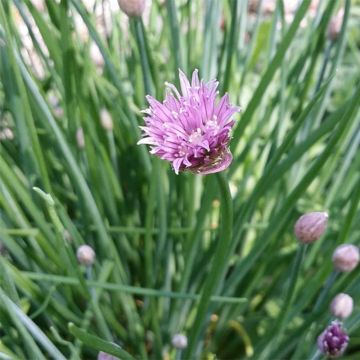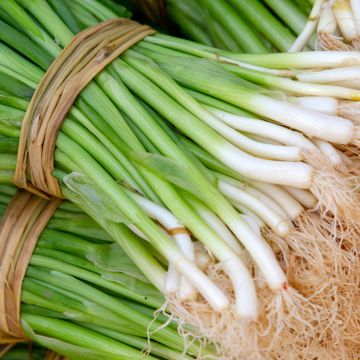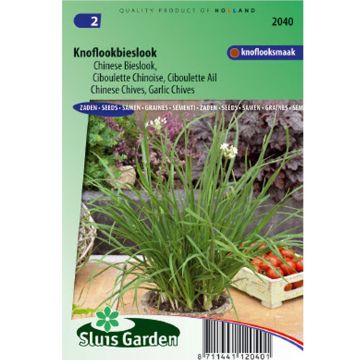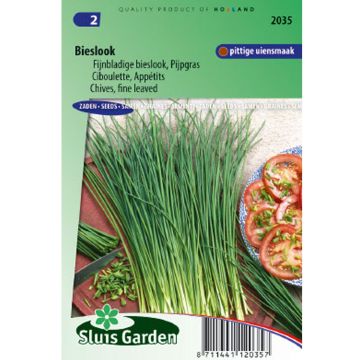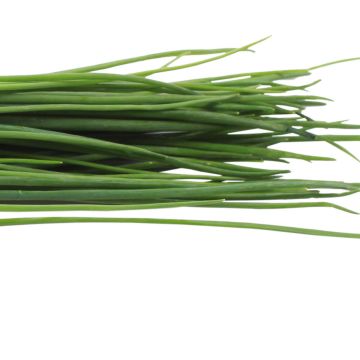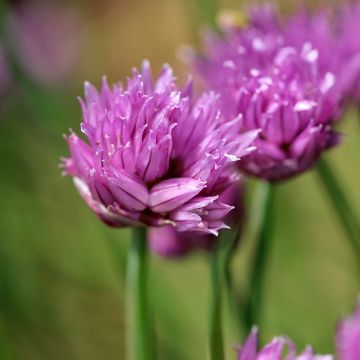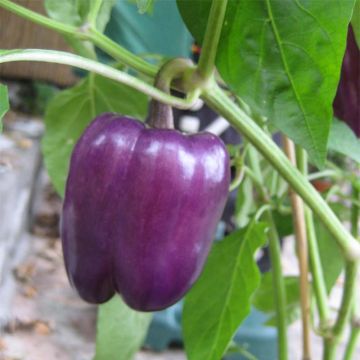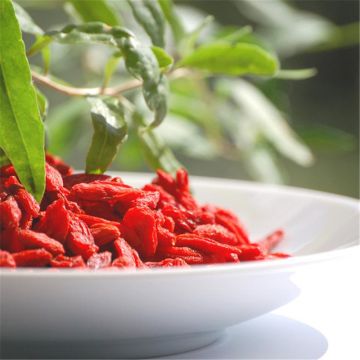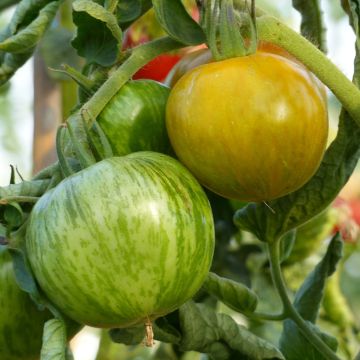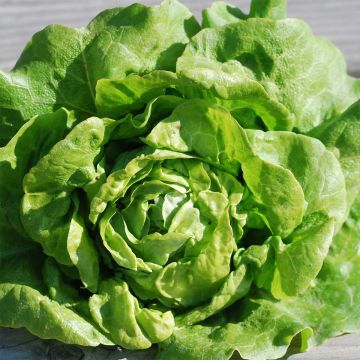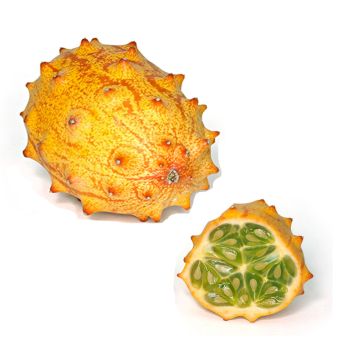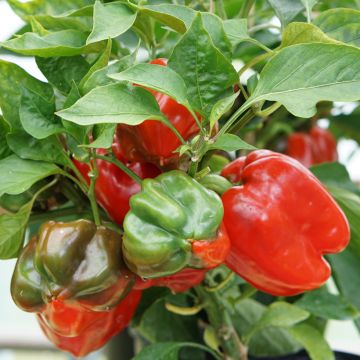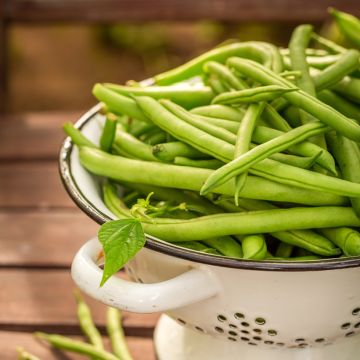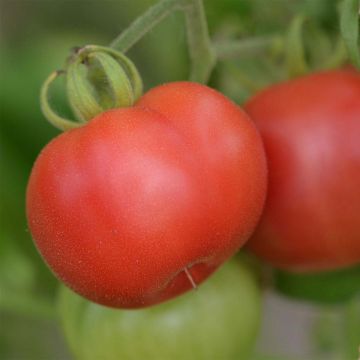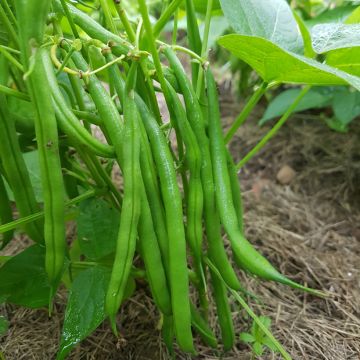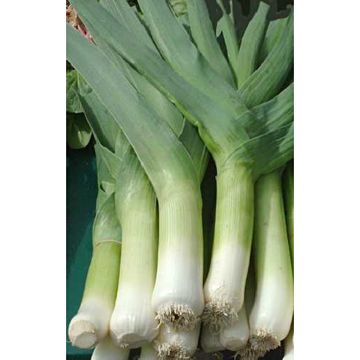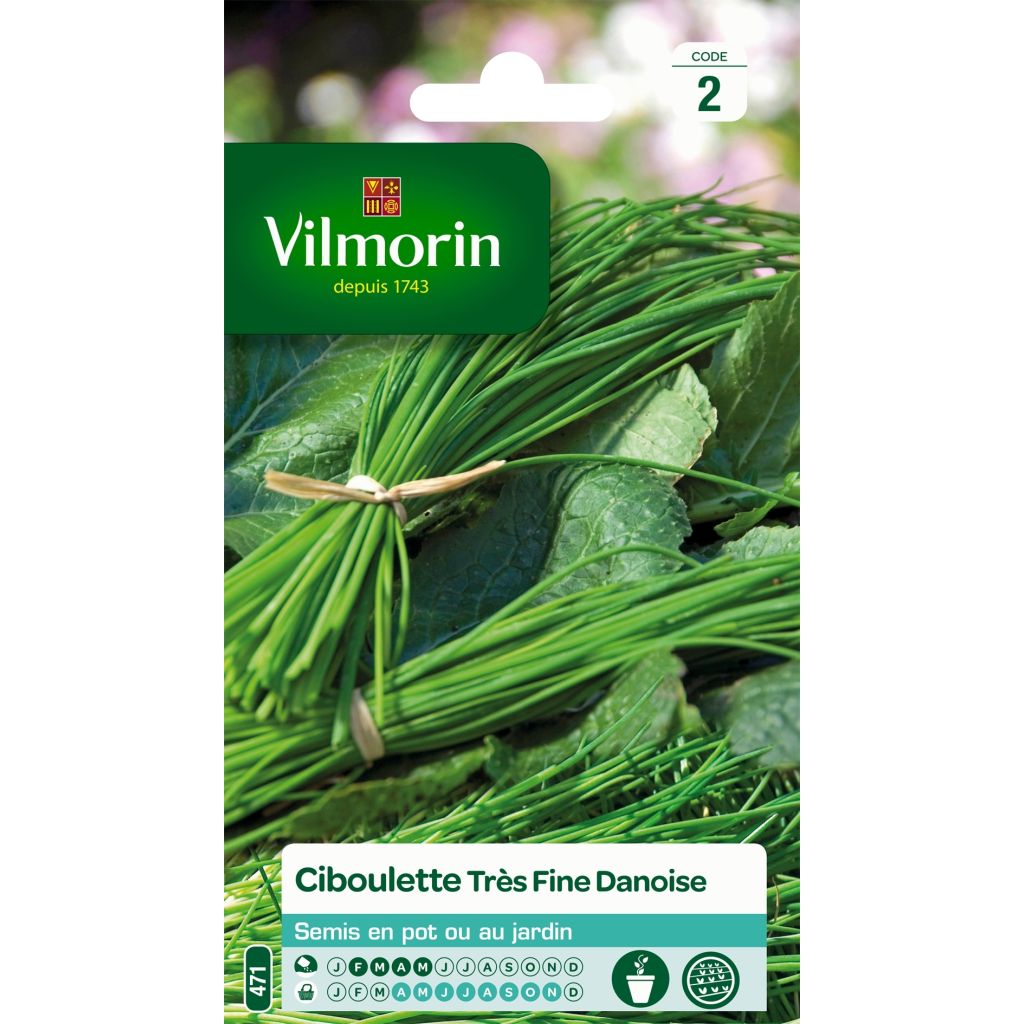

Ciboulette très fine danoise - Vilmorin
Chives Very Fine Danish - Vilmorin Seeds
Allium schoenoprasum
Chives
Why not try an alternative variety in stock?
View all →This plant carries a 6 months recovery warranty
More information
We guarantee the quality of our plants for a full growing cycle, and will replace at our expense any plant that fails to recover under normal climatic and planting conditions.
Seed-only orders are dispatched by sealed envelope. The delivery charge for seed-only orders is €3.90.
Description
‘Very Fine Danish’ chives is a smaller, finer version of the classic herb, popular for its hollow cylindrical leaves that bring a fresh, mild onion flavour to raw and cooked dishes. The 25 to 30 cm high plants produce charming, purple blooms in late spring. A perfect addition to any herb or flower garden and suitable for growing in pots! Sow from late February to June; harvest from late May to late September.
Chives are a tasty and popular perennial herb. They belong to the Allium family, along with garlic, onion and shallot. Chives form clumps of fine, hollow cylindrical stalks (scapes) and leaves. Chive plants are generally grown for two to three years, after which they become less productive and need to be divided.
The fresh, garlicy and slightly spicy taste of chives complements omelettes, quiches and fish dishes and is great to season fresh cheeses. Chives are a must-have in the herb garden... and a delight in the flower garden! Their purplish-pink pompoms are charming with roses. Their oniony aroma will also help repel aphids and prevent black spot disease, making chives a brilliant companion plant.
Harvesting: Chives can be harvested over a long period of time, from late spring to autumn. Simply cut off the stems with scissors at the base of the clump. Regular harvesting encourages the plant to put out new leaves.
Conservation: Chives can be kept for a few days in the refrigerator or for a few months when dried or frozen. Nevertheless, for a fuller aroma they are definitely best eaten fresh!
Good to know: We recommend mulching as this reduces the need to water and weed your plants.
Even if the vegetable garden is first and foremost a place for growing great quality veg, it’s always a good idea to leave a bit of room for flowers. Growing flowers alongside your vegetable plants will make your general gardening experience more enjoyable and is a great way to attract pollinators and repel garden pests! Flowers such as gaillardia, marigolds, zinnias, cosmos or nasturtiums can be sown in and around the rows of vegetables. Herbs such as dill can be very useful also. Bear in mind that some companion plants self-seed easily and can be a bit invasive (borage, chives, lemon balm etc.)
Report an error about the product description
Harvest
Plant habit
Foliage
Botanical data
Allium
schoenoprasum
Liliaceae
Chives
Cultivar or hybrid
Biennial
Other Chives seeds
Planting and care
Sowing:
Chives germinate at a temperature of around 18°C. It takes between 20 and 25 days for them to sprout.
Sowing can be done under cover or in open ground from February to June:
Starting from the end of February, in a cool place at home or in a greenhouse, in a tray with drainage holes filled with a special sowing compost, sow the seeds at a depth of 2 or 3 mm, spacing them 5 to 7 cm apart. Water with a very fine spray. When your young plants have 4 leaves, transplant 3 or 4 plants into pots and place them in the garden in autumn or the following spring (keeping 30 cm between rows).
Sowing directly in open ground should be done later, in well-warmed soil, usually around mid-May, and is done in the same way as sowing under cover. Leave a spacing of 30 cm between rows. When the plants have 5 to 6 leaves, thin them out, leaving one plant every 15 to 20 cm. Keep the soil slightly moist.
We recommend planting chives in different areas of the garden: in full sun for spring harvests and in partial shade for summer harvests. Chives can also be grown in pots.
Cultivation:
Chives thrive in full sun or partial shade, in moderately rich soil. If compost is needed, it is best to apply it in autumn, in the form of well-rotted compost (no manure), by lightly digging it in to a depth of 5 cm, after thoroughly loosening the soil as you would for any vegetable crop. Chives produce attractive flowers, but it is recommended to cut off the tough flower stalks before they bloom in order to preserve the flavor of the foliage.
Chives are very easy to propagate and can be divided in clumps from March to May or from September to October.
Seedlings
Care
Intended location
This item has not been reviewed yet - be the first to leave a review about it.
Vegetable seeds
Haven't found what you were looking for?
Hardiness is the lowest winter temperature a plant can endure without suffering serious damage or even dying. However, hardiness is affected by location (a sheltered area, such as a patio), protection (winter cover) and soil type (hardiness is improved by well-drained soil).

Photo Sharing Terms & Conditions
In order to encourage gardeners to interact and share their experiences, Promesse de fleurs offers various media enabling content to be uploaded onto its Site - in particular via the ‘Photo sharing’ module.
The User agrees to refrain from:
- Posting any content that is illegal, prejudicial, insulting, racist, inciteful to hatred, revisionist, contrary to public decency, that infringes on privacy or on the privacy rights of third parties, in particular the publicity rights of persons and goods, intellectual property rights, or the right to privacy.
- Submitting content on behalf of a third party;
- Impersonate the identity of a third party and/or publish any personal information about a third party;
In general, the User undertakes to refrain from any unethical behaviour.
All Content (in particular text, comments, files, images, photos, videos, creative works, etc.), which may be subject to property or intellectual property rights, image or other private rights, shall remain the property of the User, subject to the limited rights granted by the terms of the licence granted by Promesse de fleurs as stated below. Users are at liberty to publish or not to publish such Content on the Site, notably via the ‘Photo Sharing’ facility, and accept that this Content shall be made public and freely accessible, notably on the Internet.
Users further acknowledge, undertake to have ,and guarantee that they hold all necessary rights and permissions to publish such material on the Site, in particular with regard to the legislation in force pertaining to any privacy, property, intellectual property, image, or contractual rights, or rights of any other nature. By publishing such Content on the Site, Users acknowledge accepting full liability as publishers of the Content within the meaning of the law, and grant Promesse de fleurs, free of charge, an inclusive, worldwide licence for the said Content for the entire duration of its publication, including all reproduction, representation, up/downloading, displaying, performing, transmission, and storage rights.
Users also grant permission for their name to be linked to the Content and accept that this link may not always be made available.
By engaging in posting material, Users consent to their Content becoming automatically accessible on the Internet, in particular on other sites and/or blogs and/or web pages of the Promesse de fleurs site, including in particular social pages and the Promesse de fleurs catalogue.
Users may secure the removal of entrusted content free of charge by issuing a simple request via our contact form.
The flowering period indicated on our website applies to countries and regions located in USDA zone 8 (France, the United Kingdom, Ireland, the Netherlands, etc.)
It will vary according to where you live:
- In zones 9 to 10 (Italy, Spain, Greece, etc.), flowering will occur about 2 to 4 weeks earlier.
- In zones 6 to 7 (Germany, Poland, Slovenia, and lower mountainous regions), flowering will be delayed by 2 to 3 weeks.
- In zone 5 (Central Europe, Scandinavia), blooming will be delayed by 3 to 5 weeks.
In temperate climates, pruning of spring-flowering shrubs (forsythia, spireas, etc.) should be done just after flowering.
Pruning of summer-flowering shrubs (Indian Lilac, Perovskia, etc.) can be done in winter or spring.
In cold regions as well as with frost-sensitive plants, avoid pruning too early when severe frosts may still occur.
The planting period indicated on our website applies to countries and regions located in USDA zone 8 (France, United Kingdom, Ireland, Netherlands).
It will vary according to where you live:
- In Mediterranean zones (Marseille, Madrid, Milan, etc.), autumn and winter are the best planting periods.
- In continental zones (Strasbourg, Munich, Vienna, etc.), delay planting by 2 to 3 weeks in spring and bring it forward by 2 to 4 weeks in autumn.
- In mountainous regions (the Alps, Pyrenees, Carpathians, etc.), it is best to plant in late spring (May-June) or late summer (August-September).
The harvesting period indicated on our website applies to countries and regions in USDA zone 8 (France, England, Ireland, the Netherlands).
In colder areas (Scandinavia, Poland, Austria...) fruit and vegetable harvests are likely to be delayed by 3-4 weeks.
In warmer areas (Italy, Spain, Greece, etc.), harvesting will probably take place earlier, depending on weather conditions.
The sowing periods indicated on our website apply to countries and regions within USDA Zone 8 (France, UK, Ireland, Netherlands).
In colder areas (Scandinavia, Poland, Austria...), delay any outdoor sowing by 3-4 weeks, or sow under glass.
In warmer climes (Italy, Spain, Greece, etc.), bring outdoor sowing forward by a few weeks.

































